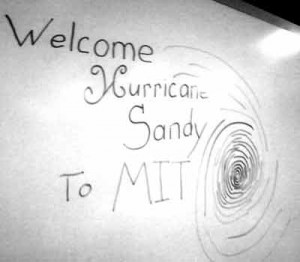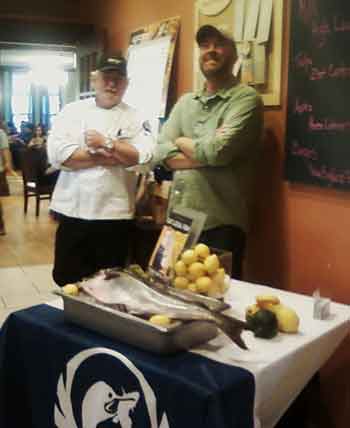In Hurricane Sandy’s Aftermath, MIT Saves (Local Fisherman’s) Day
 As Hurricane Sandy barreled toward the coast, businesses and entire cities shut down to brace themselves for what was to come. But college dining halls don’t have that luxury. College students are already “at home,” and – no matter the weather — need to be fed.
As Hurricane Sandy barreled toward the coast, businesses and entire cities shut down to brace themselves for what was to come. But college dining halls don’t have that luxury. College students are already “at home,” and – no matter the weather — need to be fed.
The Bon Appétit team at the Massachusetts Institute of Technology in Cambridge, MA, battled through the storm, despite the fact that public transportation in the greater Boston area was shut down. Workers and managers made their way as they could to campus to feed students, and then carpooled home at the end of a long day.
Close by on the Massachusetts coast, fishermen were also responding to the storm. The wholesaler Red’s Best represents approximately 10 independent fishermen, who pool their fish together to get their fresh seafood to buyers quickly and effectively through nontraditional channels, including farmers markets. As Simca Horwitz of the Massachusetts Farm to School Project, explained to me, before a big storm hits is often the best time for fishing – the stormy waters drive fish to predictable havens. Usually, after the storm passes the fishermen can sell their above average catch to their typical customers.
But the severity of Hurricane Sandy’s impact on the coast made this situation different. With roads closed and restaurants in the New York area shut down, the fishermen of Red’s Best had a lot of fish on their hands without anyone to sell it to.
Enter the Bon Appétit team at MIT.
The Farm to School Project specializes in connecting small, local farmers to institutional buyers, and they sent out notice that the fishermen of Red’s Best were struggling without a buyer. So, even as they coped with the aftermath of Hurricane Sandy on campus, Executive Chef Jim LaChance and Controller Marietta Lamarre, at MIT responded quickly by buying 200 pounds of fresh pollock from the group. It was a no-brainer — just over a month ago, Jim and Marietta (who’s also one of Bon Appétit’s “piscators,” or fish foragers) had bought 300 pounds of scup, an overlooked fish that they served with a shrimp salsa for our nationwide Eat Local (Fish) Challenge, from Red’s Best fishermen.
Jim and Marietta could react so quickly because, thanks to Bon Appétit’s Farm to Fork program (launched in 1999) and our Fish to Fork program (2011), our chefs have long had the freedom to buy ingredients directly from small, local farmers and fishers using their company credit cards or even cash if necessary.
The Farm to School Project’s Simca called it “an excellent example of the ways that farm to institution programs can really support the local economy.” For me, it’s also one fantastic example of the many individuals acts that, together, make you part of a community.
Hurricane Sandy and its effect on fishermen stir up many thoughts, not least among them climate change’s impact on fisheries, as National Geographic wrote so poignantly about. That’s why I’m proud of Bon Appétit’s ability to make a difference: not only by taking the long view, with programs like our Low Carbon Diet, but also the short view — how do we help our community quickly? — which can be equally important.
